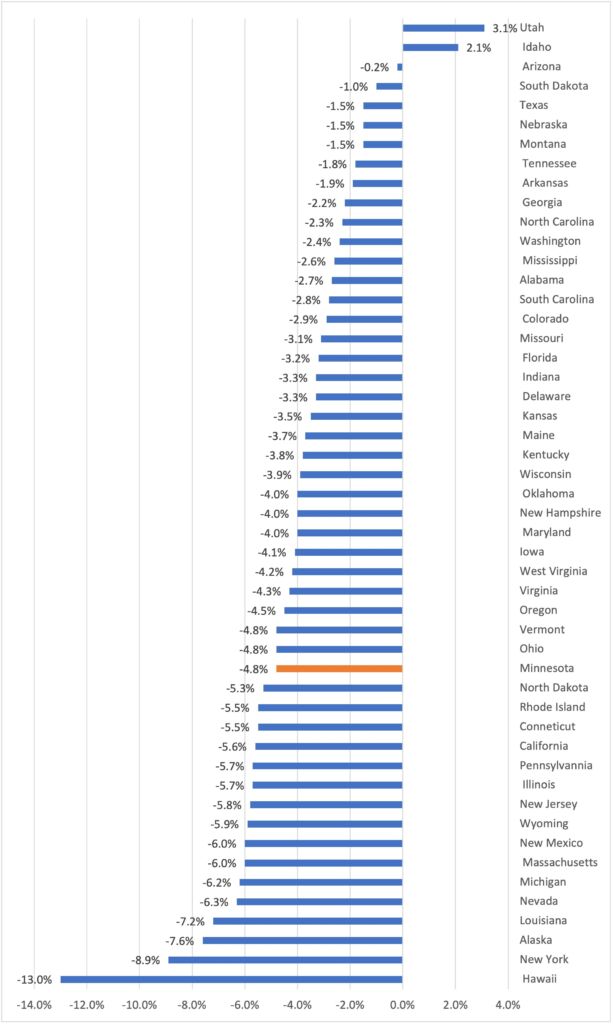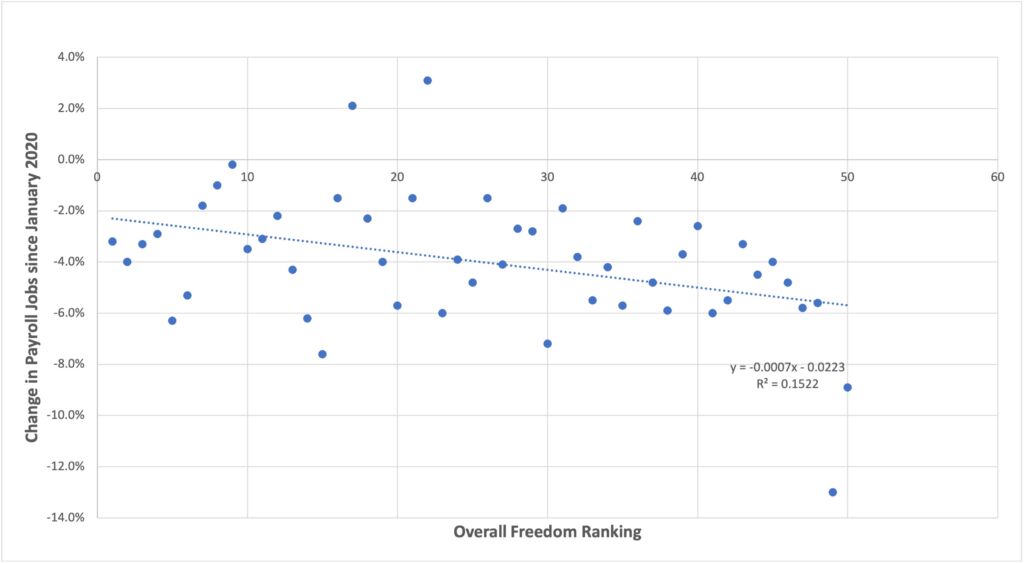Free states have faced a better recovery from pandemic job losses
The September jobs report was disappointing. According to the Bureau of Labor Statistics (BLS), the nation only added 194,000 jobs. Not only that but the Labor force participation rate has slightly declined and quit rates have gone up.
This is quite a disappointing trend. Upon further analysis, however, not all states have fared as badly as the national numbers make it seem. According to a report by the State Policy Network, conservative states –– which tend to rank well on economic freedom –– have fared much better in recovering jobs than progressive states.
Utah and Idaho remain the only two states that have more payroll jobs than before the pandemic began, though they are not going to be alone for too much longer. Arizona is only 5,000 jobs from recovery (0.2%), an amount that the Grand Canyon State can make up in one good month of growth. South Dakota, Texas, Montana, and Nebraska are all within a few months of recovery. The top 10 states for jobs recovery are all economically conservative states, while the opposite is true at the other end of the recovery spectrum.
Alaska, Wyoming, and Louisiana are notably on the bottom end of the recovery rankings, with all three states subject to the heavy job losses that afflicted the energy and tourism sectors. Hawaii and Nevada are also in the bottom 10 states, and both are dependent on tourism. The rest of the bottom 10 states are dominated by progressive governance, with New York (-8.9%) next worst to Hawaii, along with Michigan, New Mexico, Massachusetts, and New Jersey. Pennsylvania, Illinois, California, Rhode Island, and Connecticut make up the rest of the bottom 15.

In fact, a correlation chart between Cato’s Freedom Index and job recovery shows that on average, freer states have had fewer job losses between January 2020 and August 2021. States that rank least free –– 30 to 50 ––, as can be seen in the graph, dominate among the states whose job losses are 4.0 percent or more.

Minnesota, for example, ranks 37th on Cato’s Freedom Index and ranks 32nd in the rate of job recovery. Our state also ranks 32nd on the proportion of economic activity recovered as measured by CNN’s Back-To-Normal-Index.
Indeed, the pandemic was devastating to all states, but government response, as well as overall policy climate, has played a role in how states have fared. States that generally rank fairly well on levels of freedom, and have been less strict on businesses, as well as individuals, have faired much better compared to states that rank poorly on freedom levels and have been strict on businesses and individuals during the pandemic.
If anything, this should provide more evidence for the need for tax and regulatory reform in Minnesota. Lawmakers need to enact laws that make Minnesota an attractive place to work, start a business, and invest.